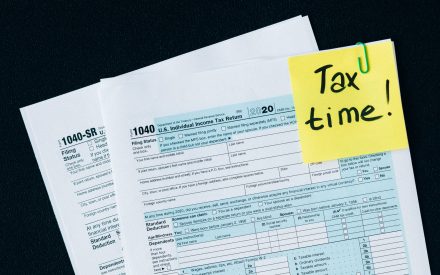Retirement planning can help you prepare for your long-term financial needs. To successfully plan for retirement, it is important to understand the accounts that can be used. You may have several options to save for retirement including accounts offered by your employer, often called employer-sponsored retirement plans, and individual retirement accounts. You may be able to save for retirement on a pre-tax basis (“Traditional”) or post-tax basis (“Roth”). Also, retirement accounts have annual contribution limits. Talk with your financial advisor and/or human resources staff to learn more.
There are 2 main categories of employer-sponsored retirement plans: defined benefit & defined contribution.
- A defined benefit plan, commonly known as a pension, promises you a regular payment from the day you retire through the rest of your life (PGBC). However, statistics show that 15% or less of private-sector employees are offered a defined benefit plan (BLS).
- Most employees save for retirement through defined contribution plans, which do not promise you a specific monthly payment upon retirement—instead you will have the ability to withdraw funds from the total balance in your retirement account as you desire (investor.gov).
Common retirement accounts offered through employers include the following:
| Account | Type |
| Traditional Pension | Defined Benefit |
| Cash Balance Pension | Defined Benefit |
| Traditional 401(k) and Roth 401(k) | Defined Contribution |
| Traditional 403(b) and Roth 403(b) | Defined Contribution |
| Traditional 457(b) and Roth 457(b) | Defined Contribution |
| Traditional Thrift Savings Plan and Roth Thrift Savings Plan | Defined Contribution |
Owners and employees at small businesses or people who are self-employed may have access to other retirement plans. If this applies to you, talk with your financial advisor about these retirement account options. For help finding a financial advisor, read UW-Extension’s article, “How to Choose a Financial Advisor.”
| Account | Type |
| Solo 401(k) and Roth Solo 401(k) | Defined Contribution |
| Traditional and Roth Savings Incentive Match Plan for Employees (SIMPLE IRA) | Defined Contribution |
| Traditional and Roth Simplified-Employed Pension (SEP IRA) | Defined Contribution |
There are also retirement savings accounts available that are not connected to your employer. These accounts require you to have earned income. You can open these accounts at your preferred financial institution.
- Traditional Individual Retirement Account (IRA)
- Roth Individual Retirement Account (Roth IRA)
Additionally, it is important to consider how government programs such as Social Security and Medicare may fit into your retirement planning. You can talk about getting started on retirement planning, and other financial topics, with your county’s financial educator. Visit https://counties.extension.wisc.edu/ for more information.


 Tools to Cope with the Financial Impact of COVID-19
Tools to Cope with the Financial Impact of COVID-19 Coping with Rising Prices
Coping with Rising Prices Planning for Tax Time
Planning for Tax Time Resources for Information About Credit Reports and Credit Scores
Resources for Information About Credit Reports and Credit Scores


